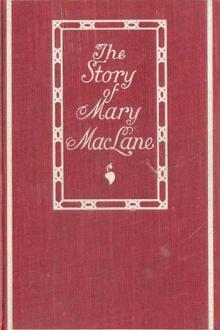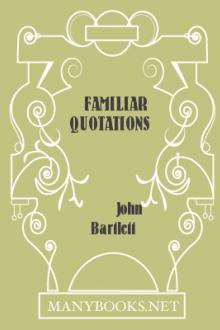A Hole In One, Paul Weininger [top novels to read txt] 📗

- Author: Paul Weininger
Book online «A Hole In One, Paul Weininger [top novels to read txt] 📗». Author Paul Weininger
“Rabbi, you mentioned it was not necessary to know Hebrew and that Mr. Straub had quit coming to you for his lessons. You also alluded to the importance of the aliyah blessings and the proper chanting. Did you give him lessons on both those important aspects of a bar mitzvah?”
“We never got that far during my lessons.”
“No more questions. Thank you, Rabbi.”
“Rabbi Isaac, thank you for your testimony,” said Judge Garnet. “Be aware that you may be called once again to the witness stand in the future. You are now excused and may step down from the stand.”
The D.A. continued, “The people call Dr. Todd Stern.”
Dr. Stern got up on the stand, gave his name and address as asked, and was told by the clerk, “Place your left hand on the Bible, raise your right hand and answer the following: Do you swear to tell the truth, the whole truth and nothing but the truth, so help you God?”
Todd, being Jewish, struggled a bit to maintain his composure when asked to place his hand on a non-Jewish bible, with the jury staring at him, but of course did so anyway. He listened to the questions carefully, trying to remember the exact testimony he gave during his deposition. After all, he had told the truth then, but felt a little hazy as to the exact chronological order of the facts he previously testified to during his deposition.
“Dr. Stern, would you please tell the jury how you know the Rabbi?” asked the D.A.
“What kind of doctor are you, Dr. Stern?” interrupted the judge.
“I’m a dentist, Your Honor, and to answer the district attorney’s question, I have been a good friend of the Rabbi’s for over twenty years and his golfing partner for over ten years. Every Sunday when the weather permits we play a round with two other friends. I also attend his services on most of the Sabbaths and during the Jewish high holy days.”
“It has come to our attention that you recently contacted Detective Pratt with some concerns you had about the Rabbi,” stated the D.A.
“Yes, I did.”
“Would you please tell the jury and the court what concerns you conveyed to the detective about the Rabbi during your call to him?”
“Well, there were three issues that I can remember. The first and most intriguing to me, was that for the first time since I’ve known him, I noticed the Rabbi had a rather small birthmark on the right side of the back of his neck, just above his collar.”
“Please continue to relate to the jury what your other two concerns were.”
“The second concern happened during one Sabbath service when the Rabbi articulated one of the most frequent Jewish prayers, which begins with “Barook ah-to ah-doughnoy, Eloheinu, mellek, ha-olum…”
“And why was this a concern?” she asked.
“Because he neglected to say ‘Eloheinu,’which begins practically all Hebrew prayers.”
“Isn’t it possible that he may have just forgotten part of the prayer, Dr. Stern?”
“Not really, you see the prayer means ‘Blessed are You, oh Lord, source of peace.’Eloheinu means ‘oh Lord.’ It would be like a priest, during his daily communion, forgetting to say, ‘This is the body of Christ.’Yet, the Rabbi didn’t say Eloheinu.”
“I see,” she stated. “So far you have given us two issues that concerned you, Dr. Stern. What was the third one?”
“After one of the Sabbath services, trying not to give away any indication that I thought something might be amiss, I approached my friend Rabbi Bloom—whom I call Neil when outside of the synagogue—and asked him in a friendly way if he could remember how long ago he began his Rabbinical services at the synagogue? He replied sixteen years. However, the correct answer as to how long he’s been the Rabbi here was eighteen years. Even if he were thinking of the amount of time we had known one another, the right answer would have been twenty-two years.”
“How can you be so sure that you are right, and he is wrong?”
“Because I graduated dental school twenty-two years ago, so I know I am correct because that’s the year I first met Rabbi Bloom.”
“Dr. Stern, you were the Rabbi’s dentist for all the years you two have been friends, were you not?
“Yes, I was.”
“Did Detective Pratt ask you to make an impression of the four teeth in the partial left jaw of the skull found in the Rabbi’s yard and compare them with any dental records you have in your office?”
“Yes, he did. However, in my practice I never made an exemplar of his entire bite.”
“Your Honor, I would like to have this partial skull marked as people’s exhibit P-2. This is the actual skull found by the police.”
It was a little late during the proceedings, but the judge decided to explain to the jury what the exhibit numbers mean. He informed them that exhibits will be numbered as P for the prosecution, followed by a number that reflects what number exhibit of evidence it is for their side when questioning a witness. The defense may introduce their own exhibits which will be labeled as exhibit D for defense, followed by a chronological number depending on how many exhibits they introduce. He then gave permission to enter the exhibit as P-2.
“The record will show that the prosecution introduced exhibit P-2, the skull found in the Rabbi’s backyard among the ashes,” Judge Garnett stated.
Some of the jurors chose not to look at it for fear of vomiting. When the judge noticed this, he insisted that each of the jurors look at the skull the D.A. was holding up in





Comments (0)